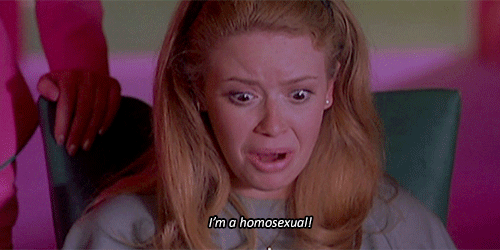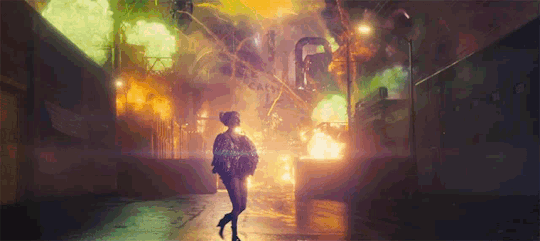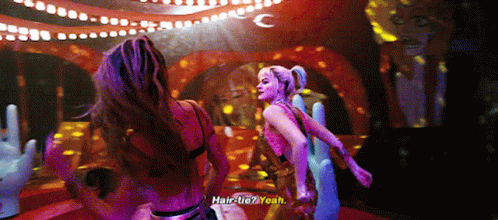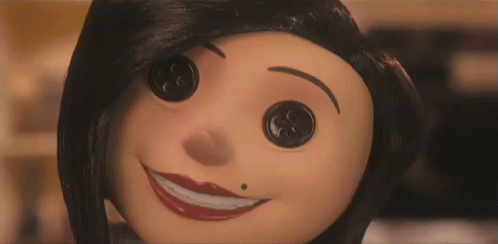Text
Queering the heteronormative… but make it pink
“I'm a homosexual! I'm a homosexual! I'm a homosexual! Oh my god... they were right. I'm a homo.”

Released in 1999, But I’m a Cheerleader is truly an iconic, camp-filled queer film ahead of its time. I remember stumbling across this film when I was 13. Perfect timing for someone questioning their sexuality, and life in general. I was immediately hooked so watching But I’m a Cheerleader has become a ritual of sorts; it has become my favorite queer film. Uneducated and unfamiliar with queer media, the younger me was immediately drawn to the B-movie chick-flick aesthetic (I was, and still am, a devourer of chick-flicks). Little did I know I was about to watch a genius concoction of satire that subverts the heteronormative by whimsically playing with outrageous queer stereotypes.
Played exquisitely by Natasha Lyonne, the protagonist Megan is sent to a conversion camp by her devout Christian parents, believing her to be a lesbian (oh no). In denial, Megan exasperates: “I’m not perverted. I get good grades. I go to church. I’m a cheerleader!”.

Arriving at the camp, we see two outrageously exaggerated gender roles of men and women. The men are dressed in baby blue uniforms, while the women are adorned with pastel pink skirts. On top of the artificially binary gender roles, we also have all the typical stereotypes of queer people: the flamboyant gays, closeted homophobes, goth and butch lesbians, and our very own lipstick lesbian protagonist. The introduction of the camp already reveals the absurdity of heteronormative stereotypes and their enforcement. The film continuously jabs at such norms while Megan begins her journey of self-discovery – coming to terms with her sexuality – in an overtly ridiculous yet candid way.
And on top of tackling such heavy topics humorously, the film also manages to have a very adorable and genuine romance between Megan and Graham (oh Clea DuVall, my bisexual awakening).

Graham, a rebel, and unwavering lesbian is everything pink-loving, ‘girly’ cheerleader Megan is not. They bicker constantly about ideals, and what it means to be gay or straight. With such contrasting personalities, the romantic sparks that fly is undeniable and beautiful to witness. I remember crying; it was the first unapologetically queer film I watched after all. This intricate play into different queer stereotypes stylistically subverts the heteronormative, showing how all types of queer people are valid and inevitable, regardless of their appearance and interests.
Perhaps my favorite aspect of the film, is how Megan's ‘lesbianism’ was to be forced out by the conversion camp, but instead, she learned to accept her sexuality, fall in love, and ended up queerer than ever. The film’s message may be told in a satirical and quirky way, but it is simple: being gay is okay. After years of relentlessly (and yummily) consuming queer media, this is still one of (if not) the only sapphic films with a happy ending. Despite the traumatic backstories of everyone, they all learn to accept themselves, and the world around them. But I’m a Cheerleader was pivotal in the discovery of my own sexuality, and it did it in such an endearing and understandable way that together with Megan, I also learned to accept my sexuality.

137 notes
·
View notes
Text
The Fantabulous Comeback of Harley Quinn
“Behind every great man is a badass broad!”

Birds of Prey: And the Fantabulous Emancipation of One Harley Quinn follows the iconic antiheroine: Harley Quinn, as she navigates life after finally leaving her abusive and dependent ex, Joker. Unlike her previous fetishized depiction in Suicide Squad, Harley is no longer hyper-sexualized through the male gaze. Instead, the sequel consists of a female-fronted team, of all ages, races, and sexual orientations. Thus, the film is shown through both a female and queer gaze. It intentionally and unapologetically subverts the male gaze, but in an authentic way by focusing on the relationship between the five female characters. From cinematography to characterization, Birds of Prey quite literally said “fuck you” to Suicide Squad and completely reconstructed the gaze, surpassing its predecessor in every way possible.
Perhaps the most circulated image of Harley Quinn, is Margot Robbie stripping her clothes in Suicide Squad in an overtly sexual manner, shamelessly catering to the male gaze. It is interesting to note how only Harley had an undressing scene as her male counterparts stared in desire. Her body is constantly objectified by the camera through closeups of her bare body, almost never focusing on the face.

In Birds of Prey, a similar scene of undressing occurs, except this time, the cinematography does not objectify the female victim. The villain of the film, Black Mask, forces a man to undress a woman in public, with spectators all over. Instead of the camera closing in and panning on the undressed body, the cinematography focuses on the horrified face of the woman, and those around her. It reveals the villain’s nature without the expense of sexualizing the female victim. It doesn’t glorify rape culture like most, if not all, scenes of assaults on women do. Instead, the film accentuates the sheer pain and horror women feel when being sexually harassed or assaulted. And with that, a message to all male directors: it’s really not that difficult to show violence against women without sexualizing them.
In Suicide Squad, Harley was only seen through the views of others, but in Birds of Prey, she narrates her own story, displaying her independence and fun personality without being sexualized, or de-sexualized. The spectrum of women in superhero films is often either innocent and cute or overly sexualized and mischievous. Character development is non-existent. God forbid women are allowed to be complex and flawed. Relentlessly, Birds of Prey addresses this and seeks to set a new spectrum for women to exist outside of male desires. This is also seen in the characterization of men. The men, including the villains, are not all displayed in a “macho” or “manly” style. Instead of the sexualization of their ab muscles, we see their reserved personalities. Men actually show emotions (one even cries) in this film! They don’t have to be unemotional or bold, they can be calculating and resourceful – something apparently only women can be.

Moving on to the most obvious difference – Harley Quinn’s fantabulous ‘I-need-no-man’ makeover. Previously, Harley’s appearance in Suicide Squad is truly voyeuristic-scopophilia come to life, fetishized beyond belief. Thankfully she now sports colorful, and playful, outfits that put comfort above all. Yes, it is still revealing but it is evidently a creative choice made by Harley herself, reflecting her explosive personality. Instead of wearing lingerie to sexily fight (sorry boys), she can now comfortably kill in t-shirts and pants.

Finally, slipping in my favorite scene when Harley offers a hair tie to Black Canary mid-fight, I thought to myself: “this is it... this is what it is to be a woman.” As a woman, this is the ultimate form of solidarity. A small but powerful act that I’m sure all women have experienced. Truly, this is a film made by women, about women, for women.
Birds of Prey flips the switch from Suicide Squad, and introduces a new Harley Quinn: no longer Joker’s property, she becomes fiery, vibrant, and most importantly, an individual woman. Yes, she still has faults, and sure, she has brutally tortured and killed many, but it is precisely this freedom of flaws that breaks stereotypes and solidifies Birds of Prey as a superior woman’s film.

#harley quinn#birds of prey#film review#birds of prey and the fantabulous emancipation of one harley quinn
23 notes
·
View notes
Text
The Chilling Adventures of Coraline
A hauntingly beautiful tale about growing up, Coraline defines itself through its uniquely whimsical take on existentialism during childhood.

Coraline is my favorite horror film. I distinctly remember watching it for the first time when I was eight. Yes, I was terrified, or rather: traumatized beyond belief when the other mother transformed (why is this labeled as a children’s film?!). Regardless, pure wonder immediately overshadowed my fear as I watched the mesmerizing stop-motion come to life. And that’s the paradox of it: the film is breathtakingly dark and gloomy, yet simultaneously whimsical and bright. It uniquely imagines the existentialism integral to growing up through a fantastically creepy, intense, and unnerving lens.
Based on Neil Gaiman’s novella under the same name, the film follows an extremely bored and isolated Coraline as she navigates her life in a new environment, while constantly being ignored by her parents. Eventually, she finds a tiny door that leads to a parallel universe; the grey and gloomy colors on the screen are outshined by intense brightness and warmth, which lure Coraline and the viewers into the seemingly perfect reality. Unfortunately, the ‘other mother’ wants to trap Coraline in her world forever by sewing button eyes. Disgusted, Coraline declines. Horror ensues.

The film shifts disturbingly: cute circus mice turn into evil, conniving dead-eyed rats, creepy ghosts of children past appear, and (truly the scariest villain of them all) the ‘other mother’ reveals her true form, a weirdly metallic hybrid between a spider and slenderman.

It is at this point Coraline realized the dangers of her constant longing for adventure. By juxtaposing Coraline’s child-like wonder with her parent’s harsh pragmatism, the film depicts the existentialism surrounding the acceptance of reality during childhood. To make matters worse, Coraline’s real parents are kidnapped, leaving her truly alone. Honestly, if I were Coraline, I would just accept my button-eyed fate and join the ghost children.
Moving on from my cowardice, the central message of the film was clear to my younger self: the existentialism associated with coming to terms with reality, even in something as innocent as childhood. We see two extreme depictions of reality: Coraline’s overactive dreams of adventure, and her parent’s neglectfulness, too busy working and earning money. I guess this is where the children’s film genre kicks in. Despite the film’s outrageously fantastical nature, it taught me about the dangers of excessive dreaming. To quote the tagline, “be careful what you wish for”, indeed.
Coraline is my favorite (horror) film. The sense of wonder and amazement I felt as a child is infinite; I am still in awe every time I revisit the film, constantly (re)discovering details in its vast and creative narrative. I just simply love it, the end.

6 notes
·
View notes